World Nuclear Powers Increasing Arsenal Amid Global Tensions
IRIA Staff - June 21, 2024
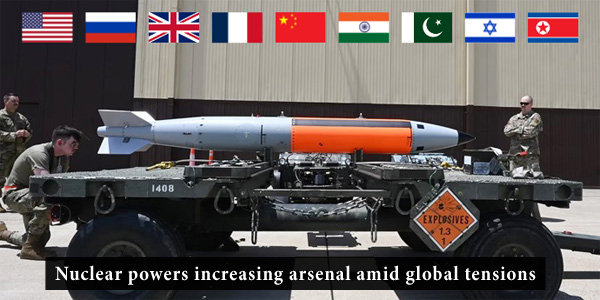
The Stockholm International Peace Research Institute (SIPRI) has reposted in its annual assessment that the world’s nine nuclear-armed states are increasing their reliance on nuclear weapons amid rising tensions and deteriorating global insecurity.
According to the report, states boosted their expenditures on upgrading their nuclear arsenals by 33% last year. SIPRI report also highlighted that the wars in Ukraine and Gaza as factors exacerbating international security concerns.
Director of SIPRI’s weapons of mass destruction program, Wilfred Wan remarked that nuclear weapons have been “playing such a prominent role in international relations since the Cold War." He said that the impacts of the conflicts in Ukraine and Gaza are "evident in nearly every facet of the issues related to armaments, disarmament, and international security examined."
According to SIPRI, the nine nuclear-armed states, the United States, Russia, the United Kingdom, France, China, India, Pakistan, North Korea, and Israel, upgraded their nuclear arsenals over the last year. Several of these states also "deployed new nuclear-armed or nuclear-capable weapon systems in 2023."
As of January 2024, the estimated global inventory of warheads stood at 12,121, marking a decrease of 391 compared to the previous year, with approximately 9,585 held in military stockpiles for potential use. However, 3,904 of these warheads were deployed with missiles and aircraft, an increase of 60 compared to January 2023.
“While the global count of nuclear warheads continues to decline due to the gradual dismantling of Cold War-era weapons, unfortunately, we are witnessing annual increases in operational nuclear warheads,” stated SIPRI Director Dan Smith in a statement release. “This trend appears likely to persist and potentially accelerate in the coming years, which is deeply concerning.”At the start of 2024, the 9 nuclear-armed states possessed an estimated 12 121 nuclear weapons. New numbers out now ➡️ https://t.co/hwXGg3URBP
— SIPRI (@SIPRIorg) June 16, 2024
USA🇺🇸 5 044
Russia🇷🇺 5 580
UK🇬🇧 225
France🇫🇷 290
China🇨🇳 500
India🇮🇳 172
Pakistan🇵🇰 170
North Korea🇰🇵50
Israel🇮🇱 90#SIPRIYearbook pic.twitter.com/GEKbCl8vEd
About 2,100 nuclear missiles are believed to be deployed and operational at any given moment. Most of these deployed warheads are attributed to Russia and the U.S., although China is reported to have "some warheads on high operational alert" for the first time.
China’s expanding nuclear arsenal
The report projects that China's inventory of active intercontinental nuclear missiles could equal those of the United States and Russia by 2030. SIPRI estimated that China's arsenal of nuclear weapons increased from 410 to approximately 500 operational warheads in 2023. The institute noted that China is reportedly deploying warheads during peacetime, marking a first for the country.
Although China's overall stockpile of nuclear weapons is expected to remain significantly lower than those of the U.S. or Russia, SIPRI anticipated that its assertive deployment could bring it in line with the active arsenals of these other nations in the foreseeable future.
“China is expanding its nuclear arsenal faster than any other country,” wrote SIPRI associate senior fellow Hans Kristensen. “Moreover, nearly all nuclear-armed states are either planning or actively increasing their nuclear forces.”
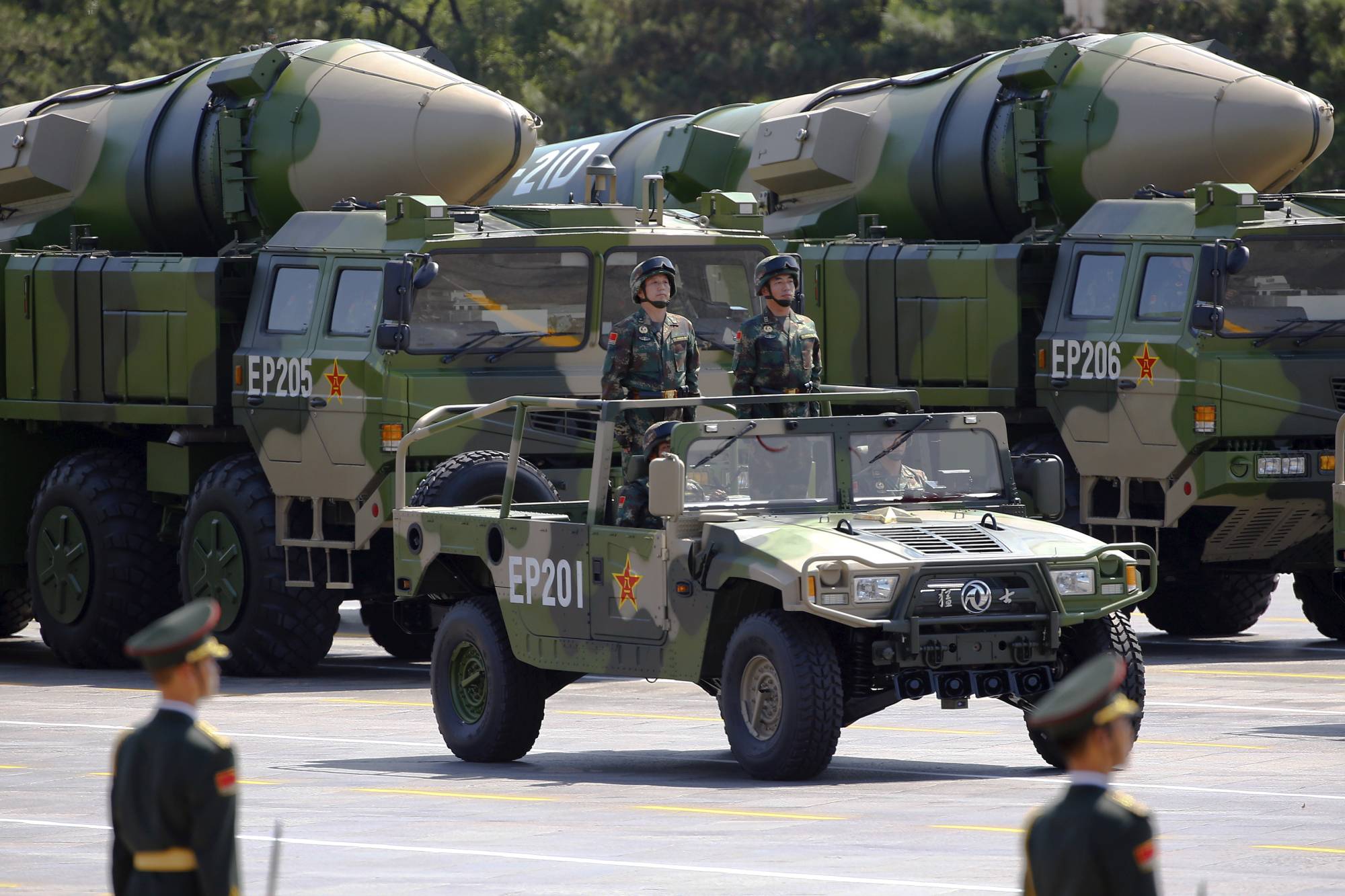 Military vehicles carrying DF-21D ballistic missiles roll to Tiananmen Square during a military parade in Beijing, China. (Image Credit: Damir Sagolj/Reuters)
Military vehicles carrying DF-21D ballistic missiles roll to Tiananmen Square during a military parade in Beijing, China. (Image Credit: Damir Sagolj/Reuters)SIPRI’s assessments were consistent with recent figures disclosed in a Pentagon report to Congress, indicating that China likely possessed "over" 500 operational nuclear warheads as of May this year and was "likely to surpass earlier projections."
India has more nuclear weapons than Pakistan
As of January 2024, India possessed 172 'stored' nuclear warheads, marking a slight increase in its arsenal throughout 2023. Meanwhile, Pakistan maintained its count at 170 warheads. Both nations are actively pursuing the development of new nuclear delivery systems. India focuses on enhancing its long-range weapons, aiming to extend its reach to targets across China. However, Pakistan remains the primary concern in India's nuclear deterrence strategy.
Among Asian nuclear powers, India, Pakistan, and North Korea are making notable strides toward deploying multiple independently targetable reentry vehicles (MIRVs) on their ballistic missiles. This development is significant, as it introduces the capability to carry multiple warheads on a single rocket, thereby multiplying the potential destructive power and complicating missile defense strategies. China, France, Russia, the United Kingdom, and the United States already possess this advanced capability.
The progression towards MIRVs in South Asia marks a critical escalation in the regional arms race, heightening the potential for nuclear conflict. The introduction of these sophisticated weapons systems increases the complexity and lethality of each country's nuclear arsenal, potentially destabilizing the already fragile security environment in the region. This development underscores the urgent need for renewed diplomatic efforts and arms control measures to mitigate the risk of a catastrophic nuclear confrontation.
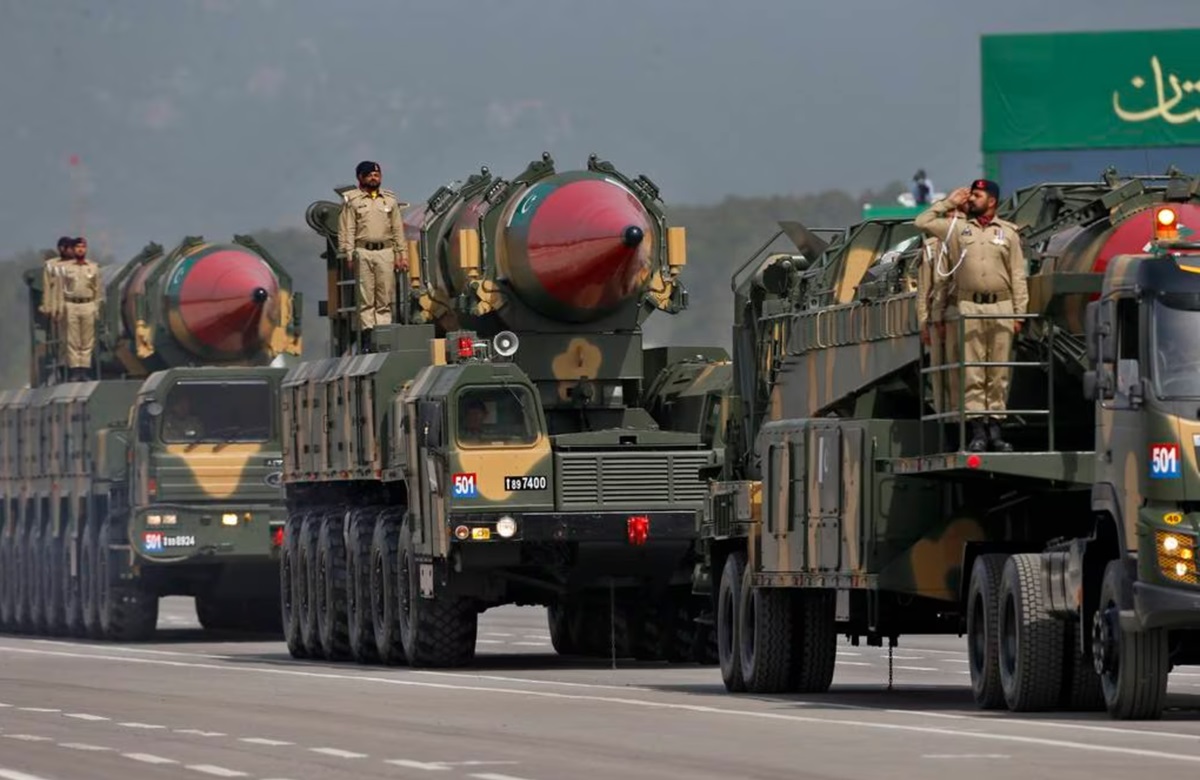 Pakistan's Shaheen-III and Ghauri missiles, which are capable of carrying nuclear warheads, are displayed during a military parade in Islamabad on March 23, 2022. (Image Credit: Anjum Naveed/AP)
Pakistan's Shaheen-III and Ghauri missiles, which are capable of carrying nuclear warheads, are displayed during a military parade in Islamabad on March 23, 2022. (Image Credit: Anjum Naveed/AP)Emerging trends in nuclear policy
The report highlights several emerging trends in nuclear policy that are reshaping the global security landscape. A key trend is the modernization of existing nuclear arsenals, as many nuclear-armed states are not only maintaining but also upgrading their stockpiles. This includes the development of more advanced nuclear delivery systems, such as hypersonic missiles, which travel at speeds exceeding five times the speed of sound, making them extraordinarily difficult to intercept.
In addition to hypersonic technology, there is significant investment in improved missile defense systems. These systems are designed to detect, track, and destroy incoming missiles, but their advancement could also provoke an arms race as nations seek to ensure their deterrence capabilities can overcome these defenses. The interplay between offensive advancements and defensive improvements complicates global strategic stability, as countries strive to maintain credible deterrence.
Nuclear arms negotiations
Another critical aspect highlighted in the SIPRI report is the stagnation in arms control negotiations. Many key treaties that once played pivotal roles in limiting nuclear arsenals and fostering transparency and trust between nuclear-armed states are either being abandoned or facing severe challenges. For example, the United States and Russia have seen significant tensions regarding the New START treaty, the last remaining bilateral nuclear arms reduction agreement between the two countries. The demise or weakening of such treaties signals a troubling regression in arms control efforts.
The report underscores that this lack of progress in diplomatic efforts to control nuclear proliferation is deeply concerning. The international community's failure to advance arms control measures increases the risk of a new nuclear arms race, as states may feel compelled to expand and diversify their arsenals to ensure their security in an increasingly competitive environment.
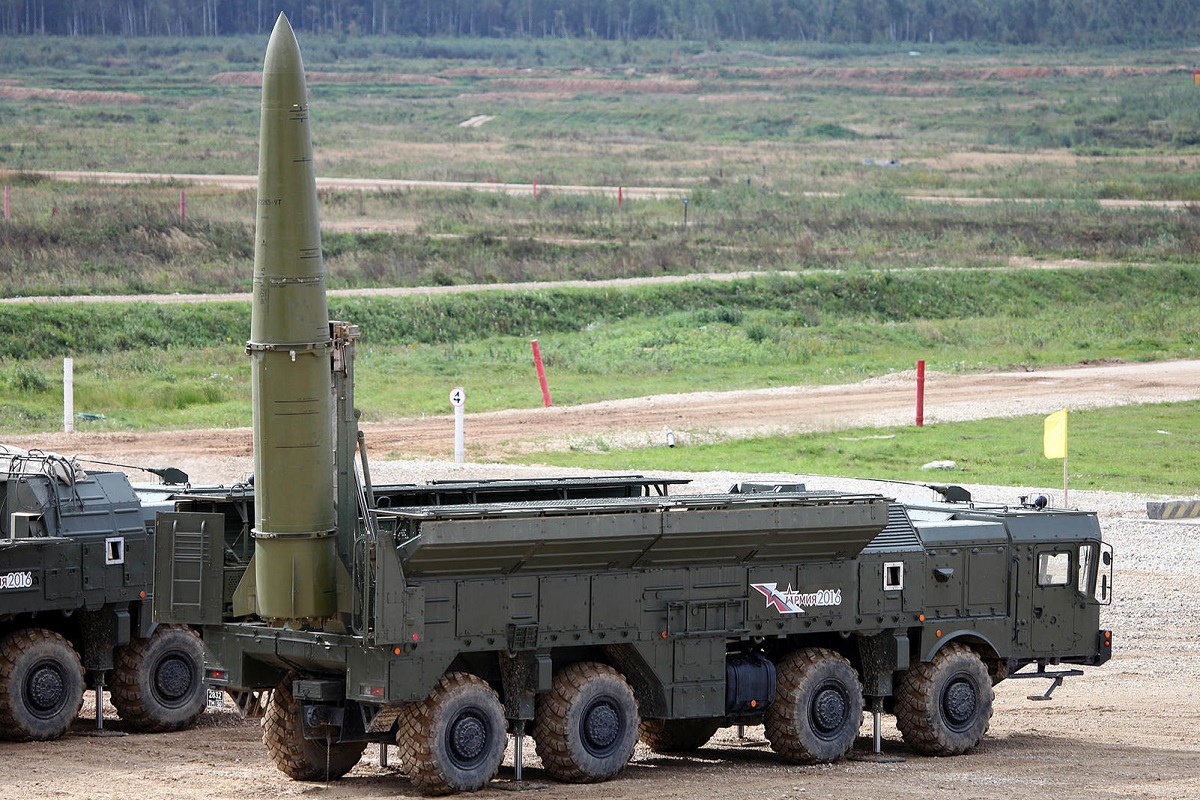 A Russian Iskander-M dual-capable missile system on display on September 8, 2016. (Image Credit: Vitaly V. Kuzmin/Wikimedia Commons)
A Russian Iskander-M dual-capable missile system on display on September 8, 2016. (Image Credit: Vitaly V. Kuzmin/Wikimedia Commons)The SIPRI report paints a sobering picture of the current state of global nuclear arsenals. With increased investments in modernization, expanding arsenals, and a notable lack of progress in arms control, the world faces a precarious security environment.
Prioritizing arms control negotiations and developing new frameworks for nuclear disarmament and non-proliferation are crucial steps toward achieving a more stable and secure world. The potential consequences of inaction are too severe to ignore, making it imperative for global leaders to engage in proactive and sustained dialogue to address these pressing challenges.
Among Asian nuclear powers, India, Pakistan, and North Korea are advancing towards deploying multiple warheads on ballistic missiles, a capability already possessed by China, France, Russia, the UK, and the U.S.
SIPRI Report: World nuclear forces as of January 2024
Deployed warheads |
Stored warheads |
Military stockpile |
Retired warheads |
Total inventory |
||||
|---|---|---|---|---|---|---|---|---|
| Country | 2024 |
2024 |
2023 |
2024 |
2023 |
2024 |
2023 |
2024 |
| United States | 1,770 |
1,938 |
3,708 |
3,708 |
1,536 |
1,336 |
5,244 |
5,044 |
| Russia | 1,710 |
2,670 |
4,489 |
4,380 |
1,400 |
1,200 |
5,889 |
5,580 |
| United Kingdom | 120 |
105 |
225 |
225 |
– |
– |
225 |
225 |
| France | 280 |
10 |
290 |
290 |
– |
– |
290 |
290 |
| China | 24 |
476 |
410 |
500 |
– |
– |
410 |
500 |
| India | – |
172 |
164 |
172 |
– |
– |
164 |
172 |
| Pakistan | – |
170 |
170 |
170 |
– |
– |
170 |
170 |
| North Korea | – |
50 |
30 |
50 |
– |
– |
30 |
50 |
| Israel | – |
90 |
90 |
90 |
– |
– |
90 |
90 |
| Total | 3,904 |
5,681 |
9,576 |
9,585 |
2,936 |
2,536 |
12,512 |
12,121 |
– = nil or a negligible value. Notes: All estimates are approximate. SIPRI revises its world nuclear forces data each year based on new information and updates to earlier assessments. The data for January 2024 replaces all previously published SIPRI data on world nuclear forces. Countries are ordered by the date of the first known nuclear test; however, there is no conclusive open-source evidence that Israel has tested its nuclear weapons. Russia and the United States no longer publish aggregate numbers for strategic nuclear forces limited by the 2010 Treaty on Measures for the Further Reduction and Limitation of Strategic Offensive Arms (New START).
ALSO READ:
Regions
Issues

















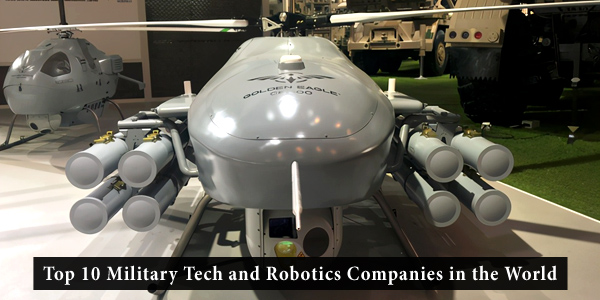 Top 10 Military Tech and Robotics Companies in the World
Top 10 Military Tech and Robotics Companies in the World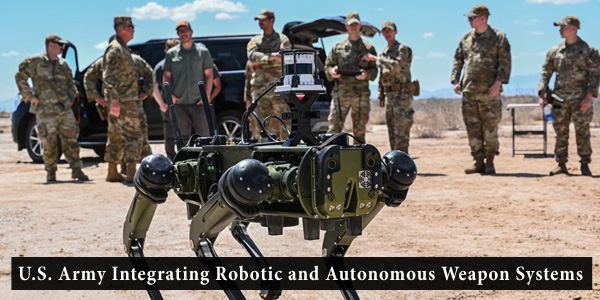 U.S. Integrating Advanced Robotic and Autonomous Weapon Systems into Army Units
U.S. Integrating Advanced Robotic and Autonomous Weapon Systems into Army Units







